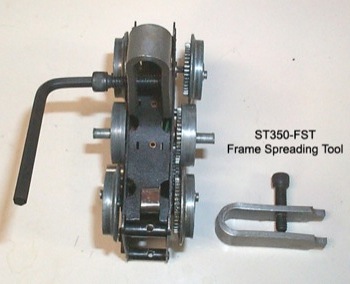I've got a great deal on 2056 from 1952 that suffered some damage in shipment where the collector plate became damaged. I priced out parts, refunded that amount by the seller, and obtained the parts. Now that I have the new collector in hand, I then did some research on how to replace the collector. That research lead me to purchase Craftsman 4735 snap-ring pliers. Unfortunately, even with those pliers, I was unable to liberate the busted collector plate, let alone feel confident I could open up enough space to wedge in the new collector plate.
Any tips on going about this repair?









